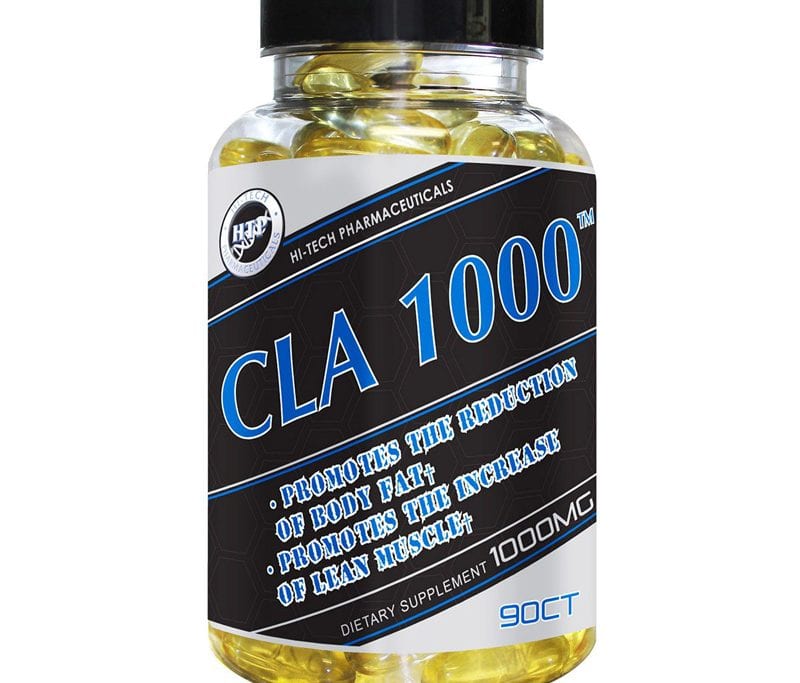conjugated linoleic acid(CLA) consists of a series of positional and geometric dienoic isomers of linoleic acid. They occur naturally in foods. That’s the technical definition. Here’s the layman version. CLA is an Omega-6 fatty acid. It occurs in meat and dairy products. You’re thinking: Fat is fat. How can it be good for me?” Well, this fat is unlike any other.
CLA – Conjugated Linoleic Acid – Research?
CLA exhibits antioxidant and anticancer properties according to Michael Pariza, PhD. He has done the bulk of existing CLA research. Dr. Pariza has shown that in laboratory mice with skin lesions and tumors, those treated with CLA had very minor or small lesions. This is compared to untreated mice.
In another experiment, Pariza fed rabbits 0.5 gram of CLA per day. He found that 12 weeks of treatment reduced low-density-lipoprotein (“bad’) cholesterol and triglycerides dramatically. The aorta of these rabbits was less clogged with plaque than those of the rabbits not fed CLA. The aorta is the large vessel leaving the left ventricle of the heart.
Additionally, CLA has been shown to overcome some of the catabolic effects of endotoxin (a poison contained in a cell) injection in mice. You might ask: “So what? So it helps fight heart disease and cancer. Heck, I could just eat a bunch of fruit and veggies or load up onVitamin E. But will it make me workout better? Will it make me bigger, leaner and more muscular?
CLA – Conjugated Linoleic Acid – Bodybuilding Benefits
One study was presented at the 1997 National Strength and Conditioning Association conference. It examined the idea that CLA supplementation might have a similar effect in humans as it does in our four-legged friends. It looked at fat loss and muscle preservation. This study used resistance-trained men, not rodents. They supplemented daily with either 9 grams of olive oil (a placebo) or CLA (6 grams plus 3.2 grams of fatty acids).
After 28-days no differences were found in gross measures such as body weight, fat mass or fat-free mass. Researchers did, however, find some other interesting data. This data suggests that a longer supplementation period might produce statistically significant differences.
CLA – Conjugated Linoleic Acid – Study Results
An analysis of the subjects’ strength showed the following: the CLA group increased their bench press by 5.5 pounds. They increased and their leg press by 30.6 pounds. Though not statistically significant, these changes could be indicative of a trend. In addition, some differences existed in the ratio of blood urea nitrogen to creatinine. As a marker of anabolic/catabolic status, this would suggest a potential net anabolic effect.
Is The Study Relevant?
Certainly the CLA – Conjugated Linoleic Acid human study could be criticized for showing no statistically significant differences. You might say once again it proves what a worthless supplement this really is.
On the other hand (this is the view I’d take), just because the differences weren’t statistically significant doesn’t mean they weren’t physiologically significant. As a real-life example, compare the times of world-class 100-meter sprinters over the course of a season. You’d be hard-pressed to find statistically significant differences (they often vary by only hundredths (if a second). Yet an obvious difference exists.
In Bodybuilding A 1-2% Change Is Huge!
For a bodybuilder, a 1%-2% difference in muscle mass is physiologically huge! Furthermore, the human studies examined a four-week supplementation period. Pariza’s animal studies lasted eight weeks. The animal studies did exhibit both physiologically and statistically significant changes in lean body mass. Also, one week for a rat is a much longer period relative to that animal’s life span than it is for a human.
What if this type of study were carried out for several months on humans? I think it’s possible that you’d get demonstrable differences. Perhaps that study is being carried out as you read this. Nonetheless, is it worthwhile to supplement with CLA – Conjugated Linoleic Acid? Maybe. As mentioned, CLA is found in its highest concentrations in cooked meats such as beef and less so in poultry and eggs. Vegetable fats are a poor source.



